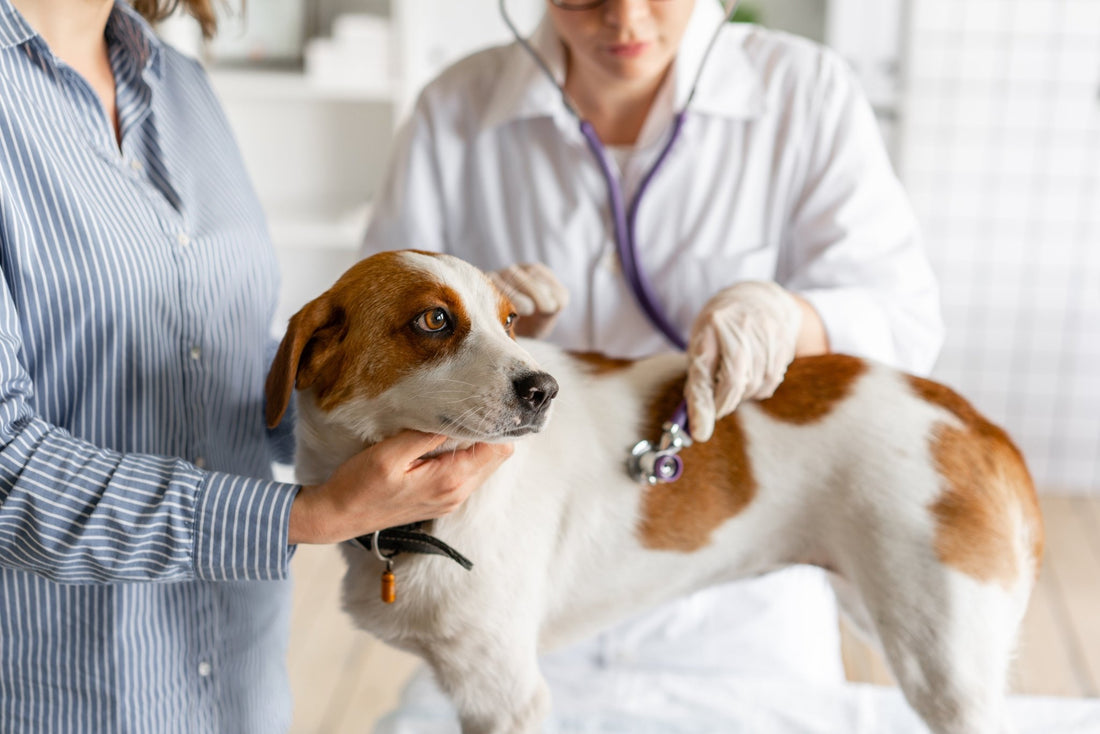Canine Lymphoma: Understanding, Detecting, and Navigating the Journey

Lymphoma, a term that strikes fear into the hearts of pet owners, is one of the most common cancers seen in dogs. However, with advances in veterinary medicine and early detection, there is hope. In this blog, we aim to shed light on this challenging condition, from its signs and symptoms to treatment options and emotional support for pet owners.
What is Canine Lymphoma?
Canine lymphoma is a type of cancer that affects the dog’s lymphatic system. The lymphatic system is an essential part of the immune system, comprising of lymph nodes, lymphatic vessels, and organs such as the spleen and thymus.
Canine lymphoma can be further classified into four categories:
Multicentric – one of the most common types of lymphoma, accounting for around 80% of the diagnoses. This type of lymphoma affects the lymph nodes throughout the body.
Alimentary – the second most common type, where the gastrointestinal tract is affected.
Mediastinal – a rarer form of canine lymphoma where cancer affects the lymphoid organs such as the lymph nodes and thymus.
Extranodal – another rare form where specific organs outside of the lymphatic system are targeted. Extranodal lymphoma can develop on skin, eyes, kidneys, lungs, and nervous system.
Canine lymphoma as a whole accounts for 15 to 20% of cancer diagnoses in dogs. It is commonly seen in middle-aged & older dogs, and certain breeds are predisposed like Chow Chow, Yorkshire, Bull Terriers, and more. However, lymphoma can still appear in puppies or younger dogs and other breeds. As a pet owner, it’s important to recognize early signs to provide a better outcome for our beloved furry companions.
Recognizing the Signs: How to Spot Canine Lymphoma
Early detection is paramount when it comes to managing and potentially treating any form of cancer in our pets. Here are some common signs of canine lymphoma to watch out for:
- Swollen Lymph Nodes: One of the most noticeable signs, lymph nodes affected will appear as firm, rubbery lumps. Check the lymph nodes around the neck, chest, armpits, groin and behind the knees.
- Lethargy: There might be a sudden and persistent lack of energy or interest in activities they once enjoyed.
- Weight Loss: Unexplained weight loss and changes in their appetite.
Depending on the type of lymphoma, owners may also notice symptoms like vomiting, diarrhea, weight loss, coughing, and shortness of breath in their dog. It's worth noting that while these symptoms might be indicative of lymphoma, they can also be seen in other conditions. If you spot any of these symptoms, please report them to your vet for further testing and diagnostics.
Diagnosis and Staging: Understanding the Extent of the Disease
If lymphoma is suspected, your vet may take on the following methods for diagnosis:
- Fine Needle Aspirate: A small sample of an enlarged lymph node will be extracted using a needle – this will then be examined under the microscope to identify cancerous cells
- Biopsy: A larger tissue sample is extracted from the lymph node or affected organs to be taken for further examination.
- Blood Tests: Blood test can be used as a means of assessing overall health which may highlight abnormalities related to lymphoma or other diseases
Other methods to help identify the spread of the disease may also be used such as x-rays, ultrasounds, and bone marrow aspirate. This will help determine the best treatment option and predict the prognosis.
Treatment Options: Fighting Back Against Canine Lymphoma
Dog treatment options will vary depending on several factors such as the stage and type of lymphoma, the age of the dog, as well as any other relevant health factors or concerns. Some common treatment options are:
- Chemotherapy: a primary treatment for most canine lymphoma using powerful chemicals to kill the cancerous fast-growing cells in the body.
- Radiation Therapy: an option used for localized lymphoma that can’t be addressed with just chemotherapy. It uses high doses of radiation to kill cancer cells and shrink tumors.
- Surgery: in the case that the cancer is localized, surgery can remove large proportions of the cancer cells to support other treatments.
In addition to these options, supportive care such as pain management and dietary support can also help with maintaining quality of life. As each case of lymphoma is unique, always consult with a veterinarian or veterinary oncologist to understand the best course of personalized treatment tailored for your pet and how you can support them as a pet owner.
The Emotional Journey
Receiving a diagnosis of canine lymphoma can be overwhelming not just for pet owners, but the pet as well. It’s crucial to remember to spend quality time together, offering comfort and reassurance to them. Dogs thrive on routine, so be sure to keep playing with them and keep their minds active.
It’s not easy to care for a sick pet so it's important that as pet owners, we seek support from family members, or support groups so that we can be in the best mental state for our furry companions.
By offering this comprehensive guide, we hope to empower pet owners with knowledge, support, and a sense of optimism when it comes to canine lymphoma. A canine lymphoma diagnosis doesn’t mean it’s the end of your journey with your pet. With love, patience, and the proper care, your pet can find comfort and joy even during this challenging time. Remember, early detection, understanding and awareness of lymphoma are the first steps towards a brighter future for our furry friends. Stay positive and stay present with your beloved pet!


